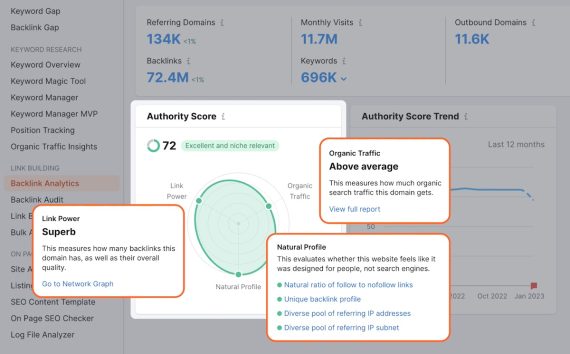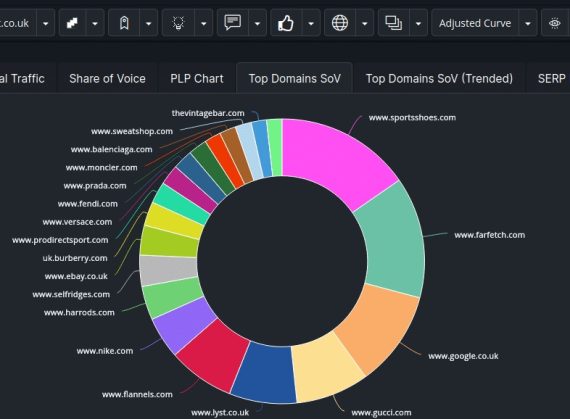Longstanding search-engine optimization metrics have gotten much less informative. Many don’t translate into site visitors, owing to Google’s new options in search end result pages, akin to “Folks additionally ask,” native packs, and picture packs. Furthermore, AI-generated solutions, known as “snapshots,” will quickly seem in Google’s Search Generative Expertise.
Take, for instance, area authority. It makes an attempt to evaluate website power solely from backlinks regardless of Google de-emphasizing their significance.
So how will we consider trendy search engine optimization efficiency? Listed here are three of my new go-to metrics.
Model Authority from Moz
Moz’s new Model Authority displays a model’s search engine power on a scale of 1 to 100. The metric is especially based mostly on the range and quantity of branded search queries, together with the enterprise and product names.

Moz’s new “Model Authority” displays a model’s search engine power on a scale of 1 to 100. Click on picture to enlarge.
Model Authority helps consider and evaluate your model’s power to rivals’. It’s useful for diagnosing rating losses and gauging viral advertising and marketing and public relations campaigns.
There isn’t any “good” Model Authority — some niches have restricted alternatives for publicity. Use the metric to check websites and ways. For instance, a competitor gaining in rankings might have an elevated Model Authority rating. Examine what they’re doing to realize it.
Authority Rating from Semrush
Authority Rating by Semrush measures the repute and trustworthiness of an internet site based mostly on a number of components:
- The quantity and high quality of exterior backlinks. Hyperlinks from excessive Authority Rating websites improve the grade.
- How the positioning ranks for related, extremely aggressive key phrases.
- Purple flags, akin to referring domains from the identical IP community and a too-high proportion of dofollow hyperlinks.
Semrush’s algorithm combines these assessments and extra to assign an Authority Rating from 1 to 100.
It’s a relative metric for evaluating domains in comparable niches, not an absolute mark. Thus, like Moz’s Model Authority, there’s no good or unhealthy Authority Rating. Use it for higher-listing websites to guage the rating issue of particular key phrases.

Semrush’s Authority Rating combines a number of components. It’s a relative metric for evaluating domains in comparable niches. Click on picture to enlarge.
Visible Rank from DemandSphere
Gone are the times when Google served 10 blue hyperlinks per web page that matched a search question. We might really estimate natural click-throughs based mostly on a place!
No extra. Search outcomes now embrace visible and interactive parts that interact customers, distract them from clicking, and encourage them to scroll deeper. Therefore we can not consider search engine optimization efficiency from rankings alone.
Visible Rank from DemandSphere displays “share of voice,” the pixel proportion of a search-result web page occupied by a website or model.
The software analyzes a given question’s high 20 SERP options — natural listings, adverts, data panels, pictures, movies, and extra. It then assigns values to the options based mostly on their prominence and visibility to searchers. For example, high natural listings probably have larger values than sidebar adverts, however decrease listings might have much less.
Google itself might have a excessive Visible Rank given the SERP sections with no exterior hyperlinks, akin to solutions and adverts.


